Rozan-ji Temple, Kyoto
Situated on Teramachi, just east of Kyoto's Imperial Palace, Rozanji temple's precincts were the home of Murasaki Shikibu's father, Fujiwara Tametoki. A tile from the original structure can be seen at the temple.
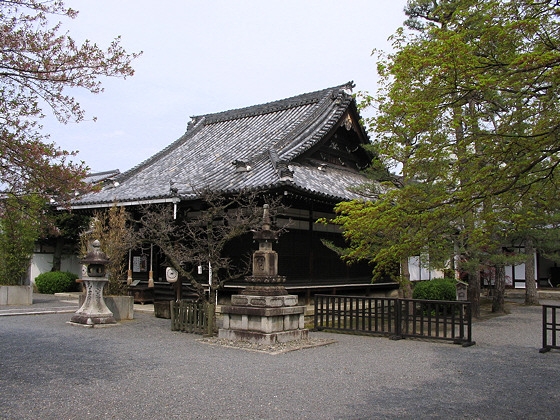
Lanterns in front of the hondo at Rozanji temple.
Mentioned in The Diary of Lady Murasaki, the residence is probably where Murasaki wrote much of The Tale of Genji. Her great grandfather, Lord Fujiwara Kanesuke, had built a mansion which was known as the mansion of Tsutsumi-chunagon, and it was here that she was born, raised, led her brief married life and gave birth to an only child - a girl named Kenko.
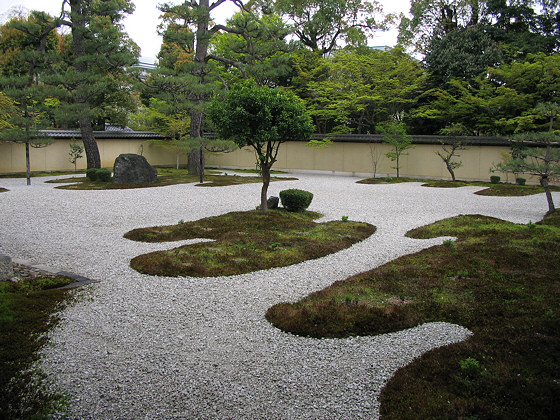
The moss and gravel garden at Rozan-ji temple is planted with bellflowers.
Rozanji Temple was built in the year 938 on a hill called Funaokayama situated at the
northern outskirts of Kyoto by the priest Ganzan Daishi. It is one of the four temples that
had an okurodo (a private Buddhist chapel of the imperial family originally located in
the Imperial Palace). These temples belonged
directly to the Imperial Court as does Rozanji today.
When warlord Oda Nobunaga attacked those temples with fire in 1571, Rozanji escaped
destruction. Afterwards the temple was moved to its present location and rebuilt. Its main
temple and the other edifices were reconstructed in obedience to the imperial command of
Emperor Kokaku. They stand now as a monument to the last buildings constructed under the
imperial command.
A portion of the mud walls built for the purpose of guarding Kyoto still remains in the
grounds of the temple. Many men of renown who lived in the Edo period are buried in these
precincts, among them Emperor Kyoko, the father of Emperor Kokaku, Princess Horegein, and
many princes and princesses, as well as Jocho Busshi, the outstanding Heian-era sculptor of
Buddhist statuary.
Every year on the 2nd or 3rd of February, called the day of Setsubun, an ancient court
ceremony of "driving out the demons" is held at the temple. This ceremony is famous as one of
the annual traditions in Kyoto.
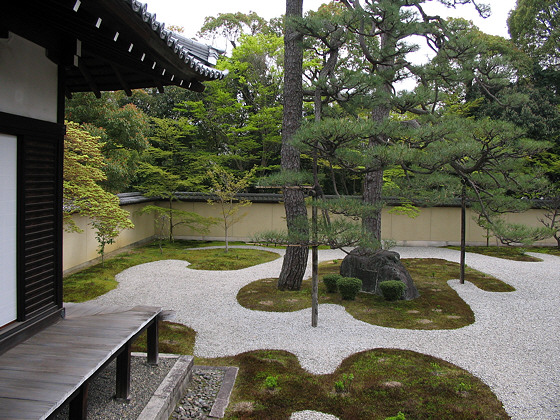
Visitors can sit and enjoy the garden.
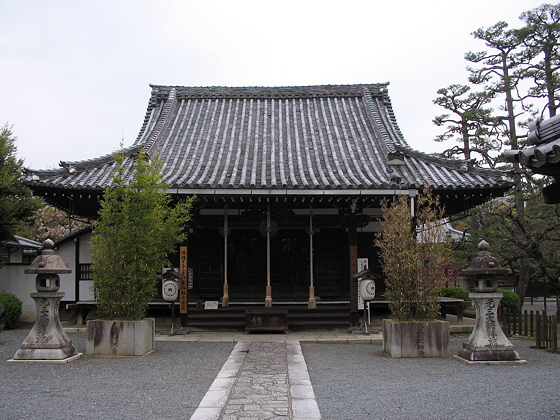
Three bell ropes hang in front of Rozanji temple's hondo.
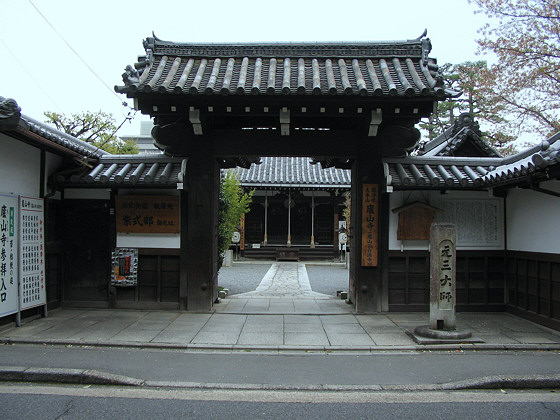
Gate.
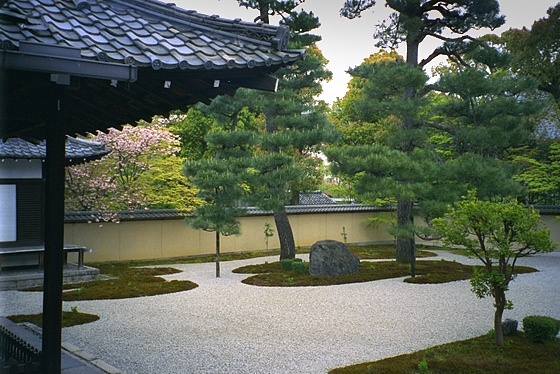
The moss and gravel garden at Rozan-ji temple is planted with bellflowers.


